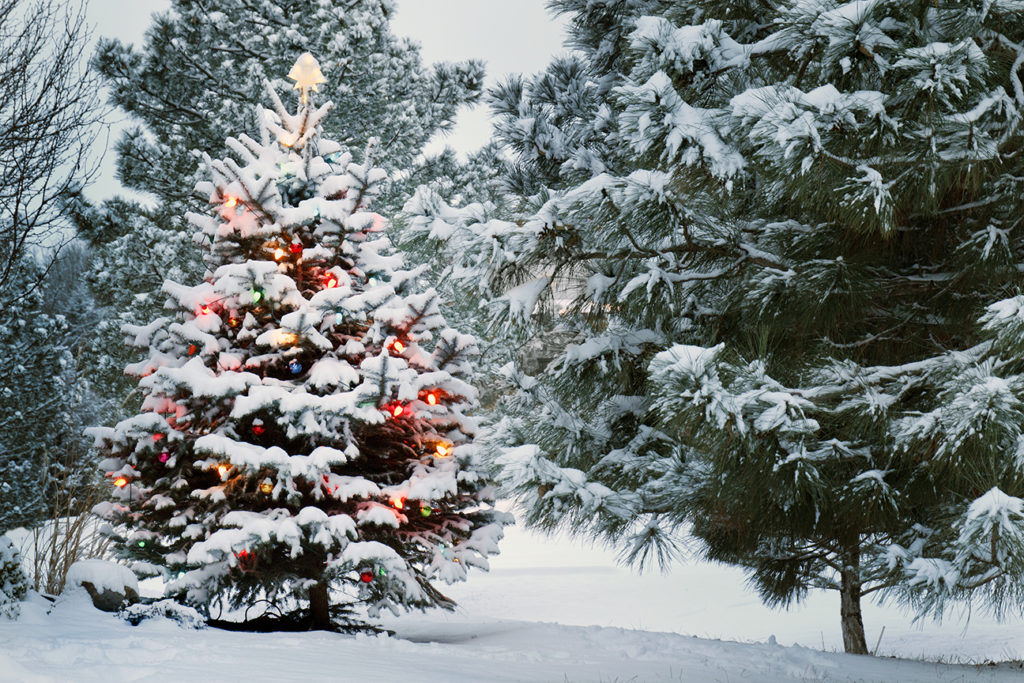By Coggin Heeringa

Each December, the Friends of Crossroads decorate a “Fish Tree” and a “Forest Tree” in the Collins Learning Center. It really doesn’t matter if they are called Holiday Trees or Christmas Trees or Hanukah Bushes. This time of year, an evergreen tree makes most of us think of giving gifts.
Until very recently, we didn’t fully appreciate the aptness of associating trees with giving. But during the last decade, researchers in America and in Europe have documented that forest trees share resources, assisting their less fortunate neighbors.
An article in Scientific American explains “No tree is an island, and no place is this truer than the forest. Hidden beneath the soil of the forest understory is a labyrinth of fungal connections between tree roots that scientists call the ‘mycorrhizal network.’ Others have called it a wood-wide web (hah!). The connections are made by the filaments of fungi that grow in and around plant roots.
Scientists have long known that the filaments of fungi help tree roots absorb water and nutrients and in return, the fungi utilize some of the carbohydrates which are produced by the tree. It now is clear that these mycorrhizal fungi form networks connecting the roots of neighboring trees in a forest….and using the fungal networks, trees can exchange nutrients, water and carbon…and information.
Apparently, trees are most likely to share their resources with their offspring or with other trees of the same species. In fact, sometimes the roots of same-species trees actually graft to one another and the connected trees act as a single organism. You can see examples of root grafting in our cedar forest near Big Creek.
But healthy trees also seem to help less fortunate trees of a different species. If a tree is in the shade, a larger tree with surplus resources might send over some carbon via the fungi to help it out. Young trees get an extra portion of carbon from parent trees (or close relatives) to help them get a good start. And when a tree is nearing the end of its life, before it dies, it will send its remaining resources to other trees in the vicinity.
I like to think, in this time of year-end giving, that Crossroads’ donors are very much like trees. People who have the financial ability send us donations (or give online through our website) so that those with fewer resources can take advantage of our programs and facilities. Many of our donors are committed to education, and just like mature trees, share their resources so the young can thrive.


 ALL CONTENT © 2024 BY DOOR GUIDE PUBLISHING
ALL CONTENT © 2024 BY DOOR GUIDE PUBLISHING




